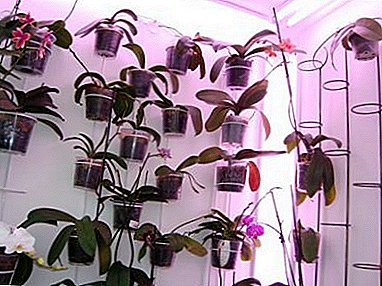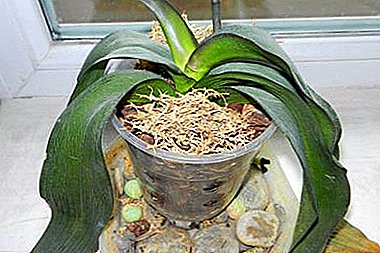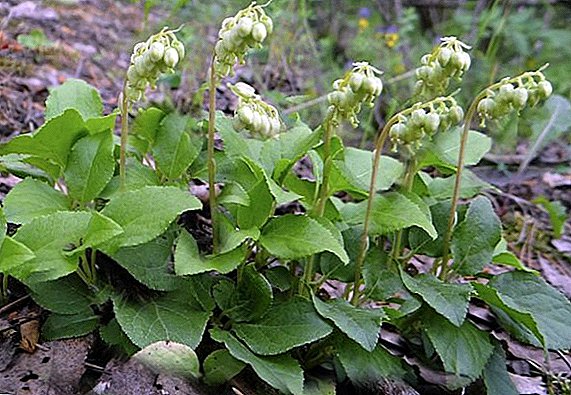
Orchid beauties have long and thoroughly settled on the domestic window-sills, this exotic will surprise no one. But the question remains: how to make it so that people from hot tropical countries would feel comfortable in our changing climate. In this article, we will learn about the basic rules for caring for a flower, about the proper organization of lighting and types of lamps, as well as about installation and possible errors when using lighting:
Basic rules for taking care of a flower at home
First of all, it should be remembered that the homeland of most orchids are countries with a uniformly warm climate, the temperature in which is not subject to significant fluctuations and is always kept at a fairly high level. Also, do not forget about the humidity and the duration of daylight, which, as a rule, is at least 12 hours.
 Knowing this, you can highlight basic orchid care:
Knowing this, you can highlight basic orchid care:
- Flowers do not like it when it is too cold or too hot, the temperature in the room should be stable, while not exceeding 30 degrees and not falling below 10.
- Plants need to provide high humidity, otherwise there is a risk that they will dry out.
- Orchid roots need access to the air, so the ground should not be dense, the best of course, special, selected depending on the particular type of plant.
- Periods of abundant watering must be alternated with periods of complete drying, as is usually the case in natural habitats.
- All orchids need intensive lighting, without it they will never actively grow and bloom. This condition is the most difficult to observe, especially in winter.
Details on the optimal conditions for the maintenance of orchids, read our material.
Why do we need phytolamps?
All plants need light for life - this is the main source of their energy. Chlorophyll, a green pigment in leaves and shoots, absorbs rays of light, thereby triggering the formation of nutrients and other essential compounds — photosynthesis (you can find out how to properly organize the necessary conditions for photosynthesis for an orchid).
There are two types of chlorophyll:
- Chlorophyll Aabsorbing the blue part of the light spectrum.
- Chlorophyll Babsorbing the red part of the light spectrum.
The main problem is that with natural light, blue waves can be absorbed during almost the whole day, while red ones can be absorbed only in the morning and in the evening. But, in the winter season or in the absence of sufficient illumination in the room, the plants will lack both the first and the second.
In order to compensate for the lack of daylight, there are special fitolamps for floriculture. You can choose a universal option, in which a special ratio of blue and red light is pre-combined, or individual lamps, adding them with ordinary white light if necessary.
How to correctly organize the backlight?
 All orchids need additional lighting in the cold season, when the length of daylight hours is significantly reduced. As a rule, this is the period from October to March, for the rest of the time it is enough to turn on the lamp periodically only in the dark time.
All orchids need additional lighting in the cold season, when the length of daylight hours is significantly reduced. As a rule, this is the period from October to March, for the rest of the time it is enough to turn on the lamp periodically only in the dark time.
Orchids need stable daylight hours. (this applies to both natural and artificial lighting), it must be at least 10 hours, but not exceed 12-14 hours.
Different varieties of orchids have different requirements for the degree of light. It is worth paying special attention to this, since an overabundance of light can be just as destructive for plants as its flaw.
When does the need for additional light arise?
The need for additional lighting depends largely on the location of the windows - if they are on the north side or closed by trees and other houses, the lack of sunlight for indoor plants will be almost all year round.
In other cases, the backlight is still needed:
- in winter all day;
- autumn and spring at twilight time of day.
Which type to choose: LED, fluorescent or other?
Consider which lamp is better to highlight the plant. The first thing to remember when choosing a lamp: it should in no case be heated. Ideally, the light source should not radiate heat at all, since even a small amount of it can negatively affect the plants.
For breeding orchids use the following types of lamps:
 energy saving;
energy saving;- fluorescent;
- metal halide or gas discharge;
- mercury gas discharge;
- LED (or LED).
All these options are suitable for organizing additional illumination of plants, but fluorescent and LED (LED) lamps are considered the most optimal for floriculture, and most of the special fitolamps are based on them. Taki lamps absolutely do not produce heat and at the same time emit light waves of necessary intensity and length.
Red or blue?
As mentioned earlier, Orchids require red and blue light to grow and develop.. Red light contributes to the abundance and duration of flowering, blue - affects the formation of leaves and shoots, so it is important to their balanced combination, otherwise the plant either simply does not bloom, or may be subjected to serious deformations.
For the correct additional illumination, you must choose either two lamps of different colors, if necessary, supplementing them with the usual paw of daylight, or purchase a combination lamp that already contains both of these elements.
How to install?
Lamps should be located directly above the leaves., since it is in them that the photosynthesis process takes place. At the same time you should not place the lamp close, the minimum distance from the surface of the sheet - not less than 3 cm.
To achieve an optimal result, any kind of additional sanctification is useful to combine with reflectors (it can be even the most ordinary mirror), thus, the plants will get much more light.
How to use?
There are two main options for using artificial lighting:
- In the morning and in the evening it is necessary to turn on the red lamp, since it is during this period that plants usually absorb light with this wavelength, and throughout the rest of the day - blue. Also, in order to extend the daylight to the required 10-12 hours, in the dark it is necessary to additionally include an ordinary white lamp.
- Both the blue and red lamps are switched on at the same time throughout the day and are also complemented with a white lamp if necessary.
Attention! The duration of the lighting is individual and depends on the orchid variety. On average, it is about 12 hours, but always at least 10 hours. It is possible to completely replace natural lighting with artificial light, but this is not recommended.
Action taken
Properly installed lighting will contribute to the growth and development of the plant, the emergence of new leaves and shoots, abundant and long-term flowering. During the winter, artificial lighting will allow the orchid to continue active livelihoods, so that it will bloom more often.
Possible mistakes
There are three main errors associated with the choice of lighting:
 Lack of light. At the same time, the leaves become dark green, sometimes even with a blue tint, they become sluggish and die with a prolonged lack of light.
Lack of light. At the same time, the leaves become dark green, sometimes even with a blue tint, they become sluggish and die with a prolonged lack of light.- Excess light can cause overheating, and even the death of the plant, since it cannot recycle more light than it needs. In this case, the leaves usually get a reddish tint.
- Wrong choice of light. An excess of blue light, with a lack of red will cause rapid growth of leaves and shoots, but such an orchid will never bloom. The opposite situation may provoke abundant flowering, while an insufficiently formed delicate peduncle may not withstand the weight of flowers and break, and the leaves will develop unevenly.
Orchids are delicate flowers and completely unadapted for our climate, they need warmth, regular watering and irrigation, as well as enough light, and then they can regularly delight their owners with bright exotic flowers.


 energy saving;
energy saving; Lack of light. At the same time, the leaves become dark green, sometimes even with a blue tint, they become sluggish and die with a prolonged lack of light.
Lack of light. At the same time, the leaves become dark green, sometimes even with a blue tint, they become sluggish and die with a prolonged lack of light.









